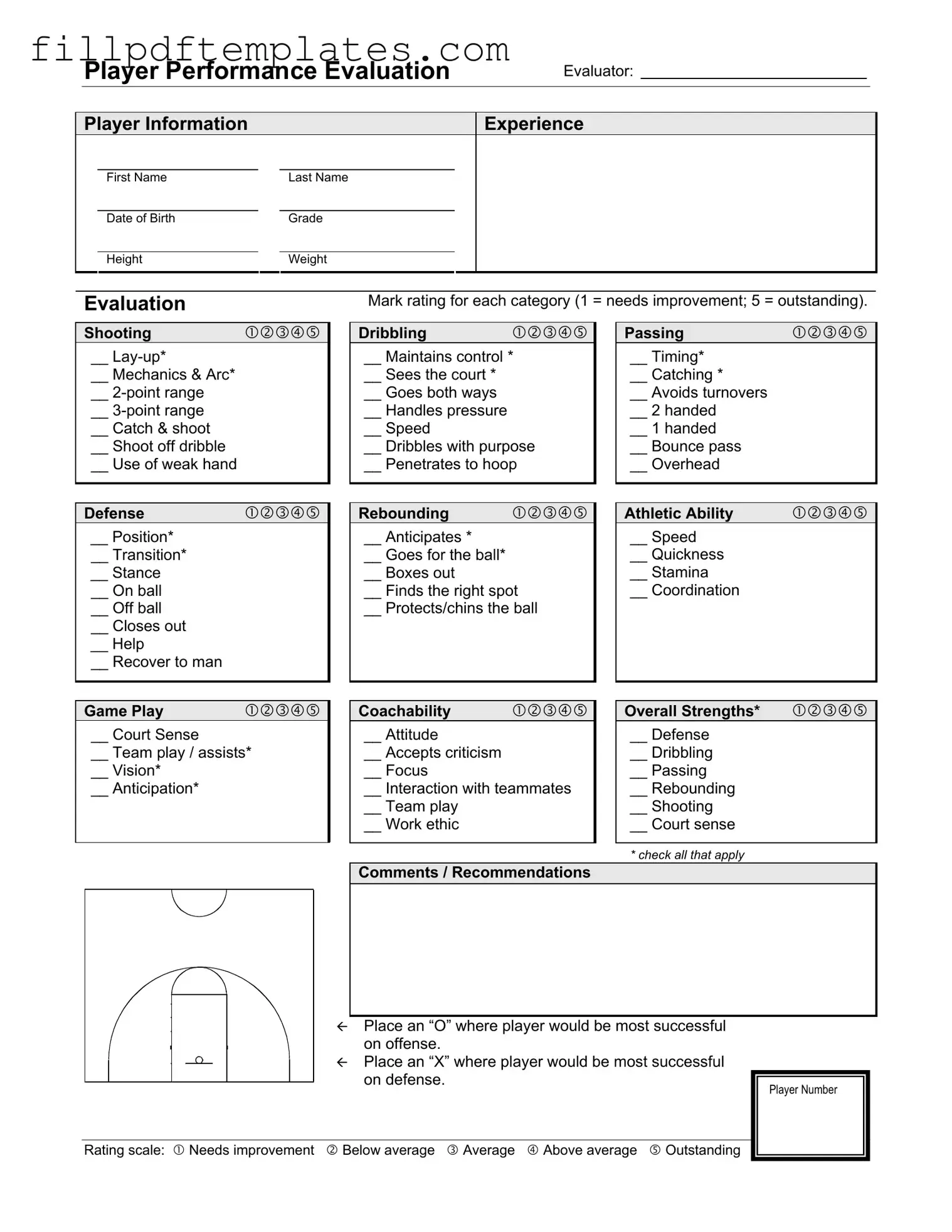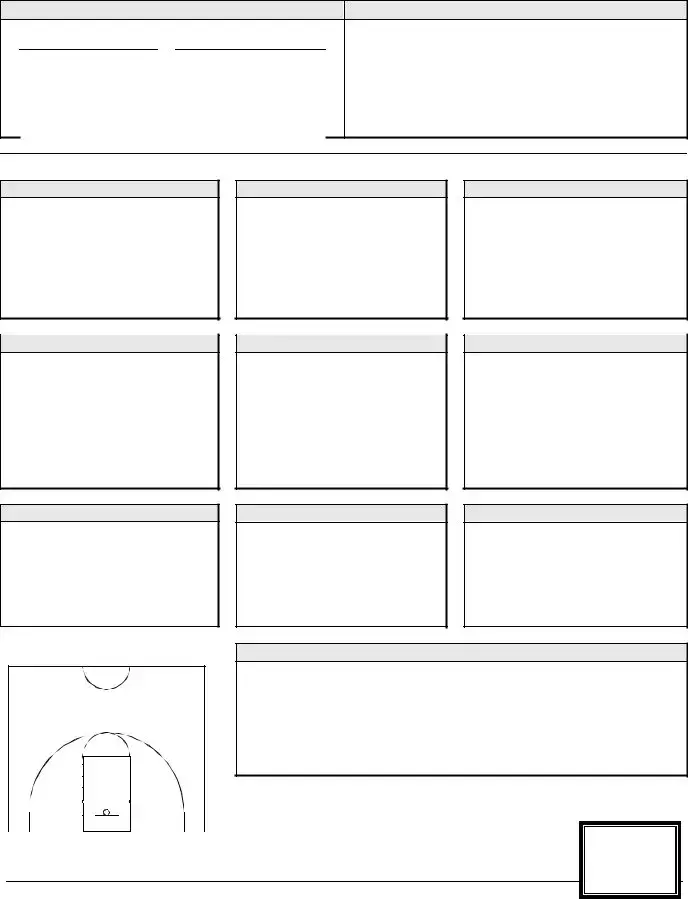The Basketball Evaluation Form serves as a comprehensive tool designed to assess a player's skills and performance on the court. This form gathers essential player information, including the athlete's name, date of birth, grade, height, and weight, which helps evaluators understand the context of the assessment. Key areas of evaluation include shooting, defense, dribbling, rebounding, passing, athletic ability, game play, and coachability. Each category is rated on a scale from one to five, allowing evaluators to provide specific feedback on various skills, such as shooting mechanics, defensive stance, and court vision. The form also encourages evaluators to highlight overall strengths and offer comments or recommendations, ensuring a well-rounded assessment. By marking where a player excels on offense and defense, the form helps coaches and players identify areas for improvement and develop strategies for future success. This structured approach not only aids in player development but also fosters a deeper understanding of individual capabilities within the team dynamics.

